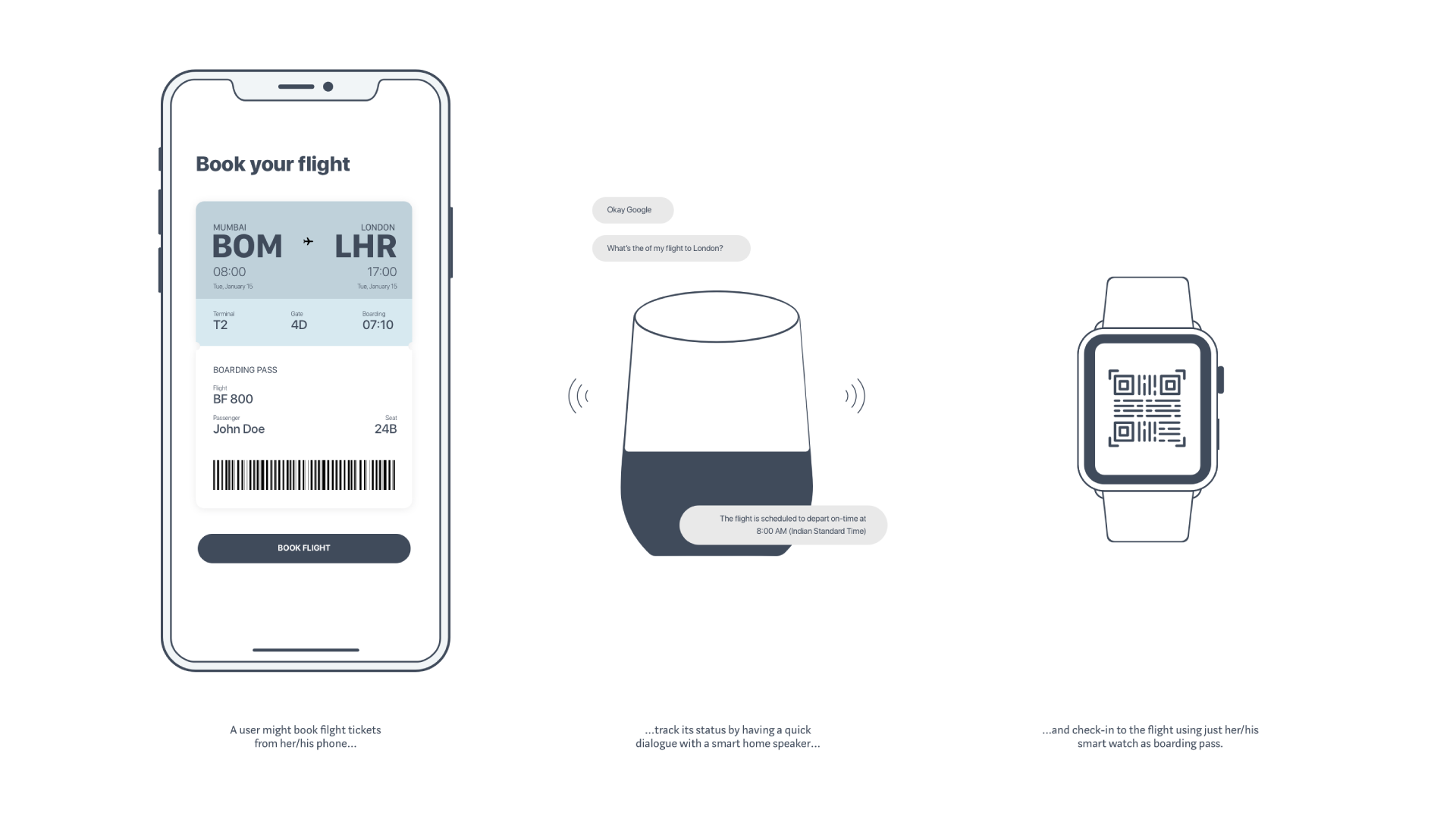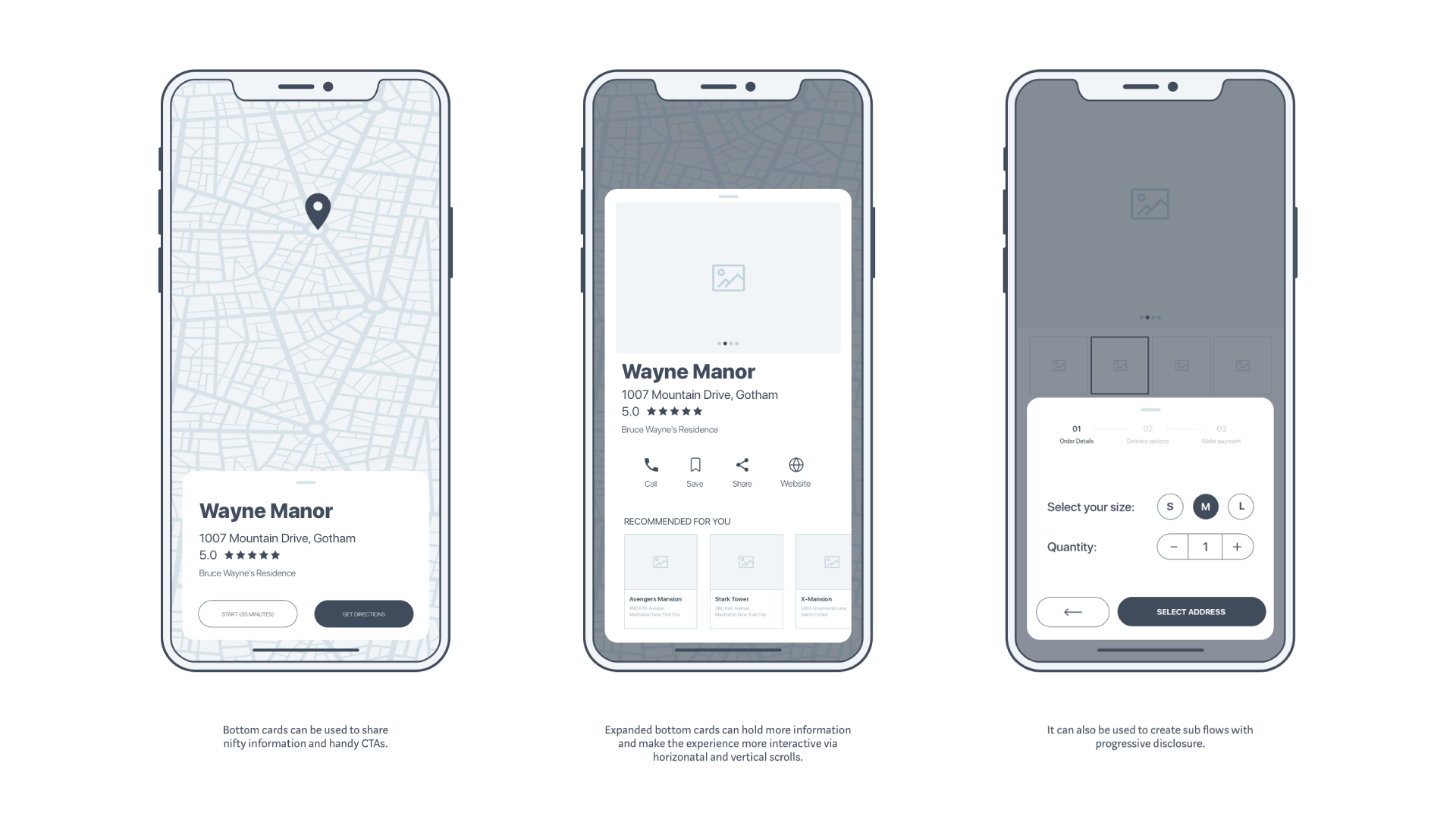UX design is always changing. In a span of mere two years, we’ve seen, not just advent, but also mass adoption of disruptive technologies, such as voice user interface, mixed realities and smart home devices. The actual process of designing these experiences might have stayed the same, but the emergence of new technologies has given rise to new human behaviours, which require new experiences and solutions.
As we move into 2019, user-centred design will be a top priority for companies. Which puts the field of UX design firmly into the mainstream, as a compelling ingredient of the business/customer relationship.
With this in mind, let’s take a closer look at emerging UX trends that have the potential of becoming “big thing” over the coming 12 months.
Personalised Experiences
The ideology of “one-size-fits-all” and “mass-production” is obsolete in 2019. The over-saturation of markets means consumers are expecting more from brands. Imagine walking into your preferred restaurant and being presented with your favourite food tailored not only to your taste but also to your mood and craving. Delightful, isn’t it?
With the rise of machine learning and artificial intelligence, companies now have an opportunity to take a personalised approach towards serving their customers. Brands like Netflix have known to curate content recommendations with their proprietary algorithm. Expect 2019 to be the year when data-based design is widely adopted as personalised experience move from a “nice-to-have” to “must-have” category.

Voice User Interface
The popularity of Alexa and Google Home can’t be undermined. They are the new norm, as they become users’ go-to medium to seek nifty information, get entertained and even control their routine tasks. The navigation-less, button-less and menu-less experience seems so intuitive to a user that 40% of adults now use voice search once per day!
According to ComScore, by 2020, 50% of all searches will be voice searches. This makes it clear — voice isn’t the future. It’s already here, and will only become more prevalent in 2019. Voice interactions are slowly but fundamentally changing the way we interact with interfaces — instead of relying on touchscreens, mice and keyboards, users are steadily accepting the hands-free way of doing their everyday tasks. Smart home speakers have already found their place in hospitality industry, automobiles and large enterprises.
The convenience of having an always-on machine that helps you do your digital tasks, will not only aid the visually impaired but also introduce a unique way for illiterate users to access the web in the years ahead.

Simplified authentication
Users have an overwhelming password problem. They spend a ridiculous amount of time thinking an easy-to-remember-but-difficult-to-guess password which complies with silly requirements (5 uppercase letters, 3 special characters, yada yada) while registering for any service. And recalling their complicated passwords when needed is where people seem to run into trouble — request “reset password link”, go to inbox and click on the link and, again, think of a new, unique password. According to a study, 37% of people experience such scenarios at least once a month!
To deal with this friction in user experience, we might see a profuse implementation of password-less login methods. This can be in the form of biometric authentication, temporary passwords or even magic link. Medium, Slack and Notion are amongst the first few who have adopted a password-less login mechanism.
Users are connected to more devices and have digital accounts than ever, which means the password-less approach of authentication is only growing more convenient for users. Not only such a system make things smoother for a user, but it also makes it more secure.

The rise of gestures
Users like information hoarding and content is becoming more and more important. Thus, device makers are freeing up screen real estate to squeeze in more information on the screen. This convention has led us to sacrifice the “home” button — initially in the physical form, and now from the screen too. Which has given rise to UX that is primarily based on gestures. iPhone X marked the beginning of this era and Google Pixel 3 confirmed this as a trend.
Although this is a challenging trend for UX designers, the users have come out of their initial frustrating experience of going around gesture-based navigations and embraced its intuitivity. This makes it imperative for UX designers to emulate common human gestures in the digital universe and translate it into a smooth experience using swipes, flicks, drags and pretty much anything that counts as natural motion.

Multi-device experiences
By 2020, the number of connected devices per person is expected to be 6.58. That's nearly double since of 3.47 in 2015. The rising number of smart devices available in the market has dramatically changed the way we access information. Mindset is shifting and the trend of focusing exclusively on mobile should be re-evaluated. The approach of ‘mobile-friendly’ or ‘mobile-first’ user experience will be superseded by “multi-device” experiences.
Creating device-agnostic user experiences would be prominent in 2019 as providing a smooth user experience on an ever-increasing range of new devices becomes a priority. UX designers will be pushed to create a more dynamic experience and think in terms of user journey as a whole — not just in terms of the device being used.

Wearables are the new black
The wearables are attaining mass popularity as their numbers grow from 325 million in 2016 to 830 million in 2020. From tracking health and making payments to managing simple tasks like a to-do list — wearables are designed to solve tons of routine problem. In 2018, smartwatches became even more sophisticated. The recently released Apple Watch Series 4 changed our outlook towards smartwatches — they aren’t a geek toy or a fashion fad anymore, the cellular connectivity practically makes smartwatch a replacement for a mobile phone!
Wearable technology is not only limited to smartwatches though. They expand into health industry where they help track and monitor sleep, take ECG, measure stress levels and even act as hearing aid for hearing impaired.
The proliferation of wearables as a category will push the boundaries of what can we do with them, expect to see a larger adoption rate over the coming years.

Navigation 2.0
Phones with taller aspect ratios are thoughtfully designed to improve the user experience on more than one ground. They hold more content on the screen, improves multitasking, enhances VR experience and helps in having a firmer grip on the device. The problem with such displays though is that they take away the clickable elements further away from the natural movement of the thumb! To solve this problem the likes of Google, Apple and Facebook brought in an era of bottom navigation — which eventually became a standard industry-wide practice.
The acceptance of this navigation pattern led designers to value the lower half a mobile screen. Bottom navigation, in 2019, will not just help the user access a few core features of the app. It will also be a place to access “bottom sheets” which, thanks to its versatility, opens doors to new possibilities.
Expect UX designers to utilise the bottom sheets to create seamless sub-flows like checkout process, quick forms, nifty contextual content (by vertical scroll) and similar content (by horizontal scroll). All without leaving the primary screen! Handy, ain’t it?

Back to you
Technically, most of these trends aren’t new — they have been around for quite some time now. 2019 would just see them gaining more ground. The only practices that might never go out of fashion are: offering intuitive, time-saving and user-friendly design.
What do you think?